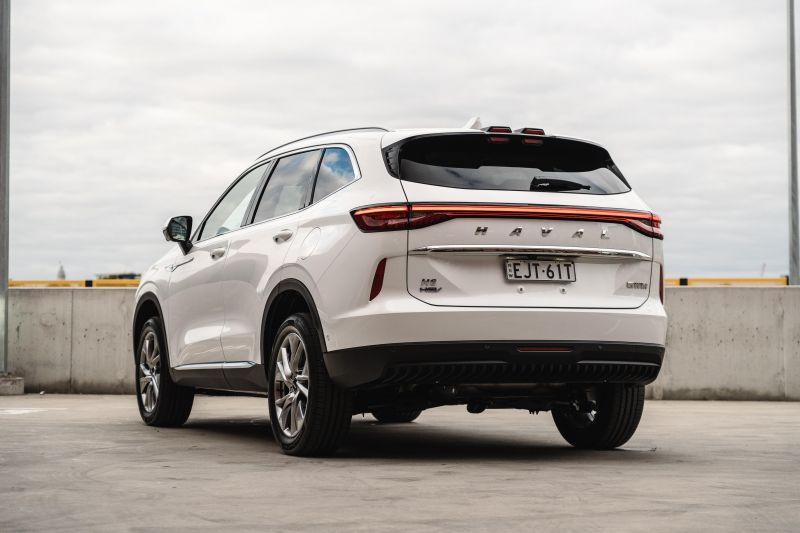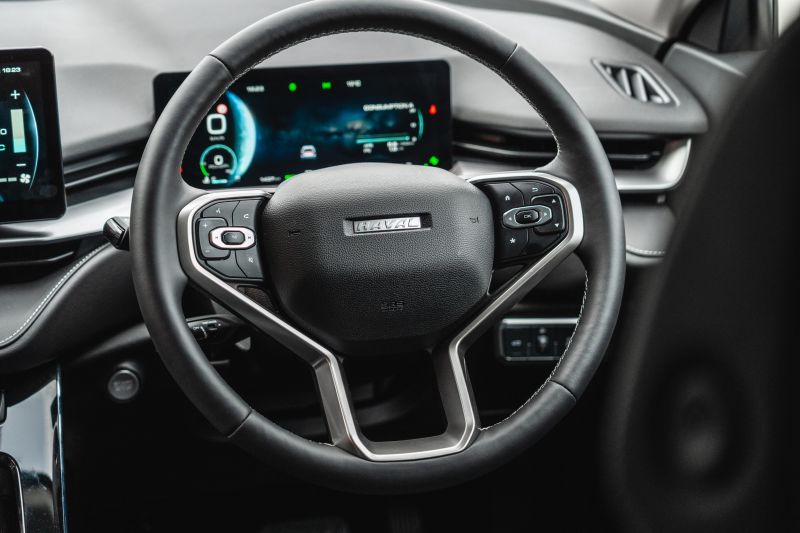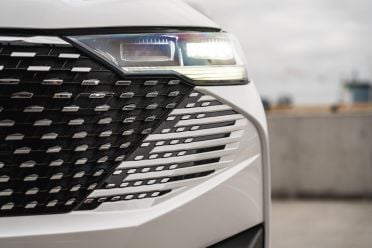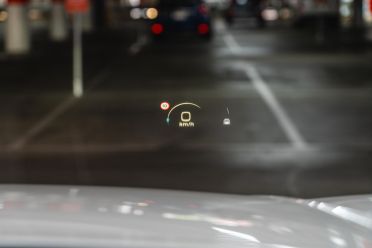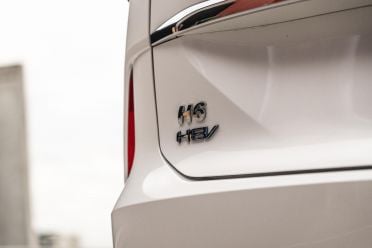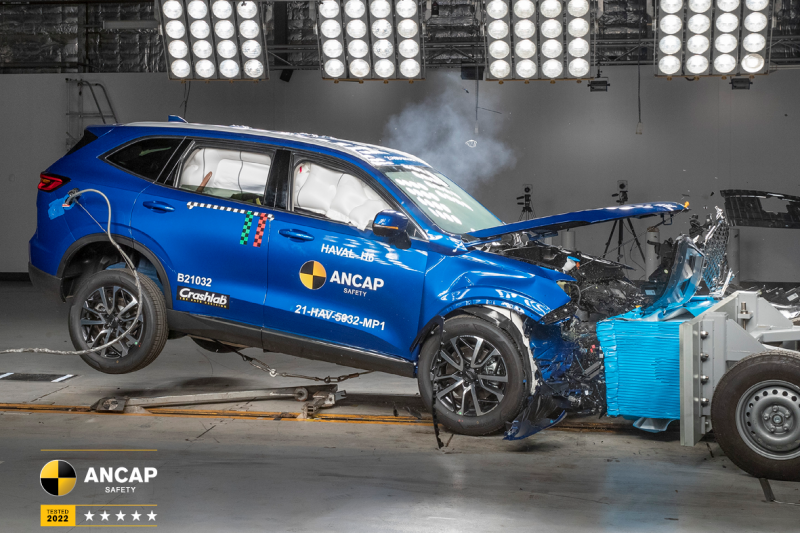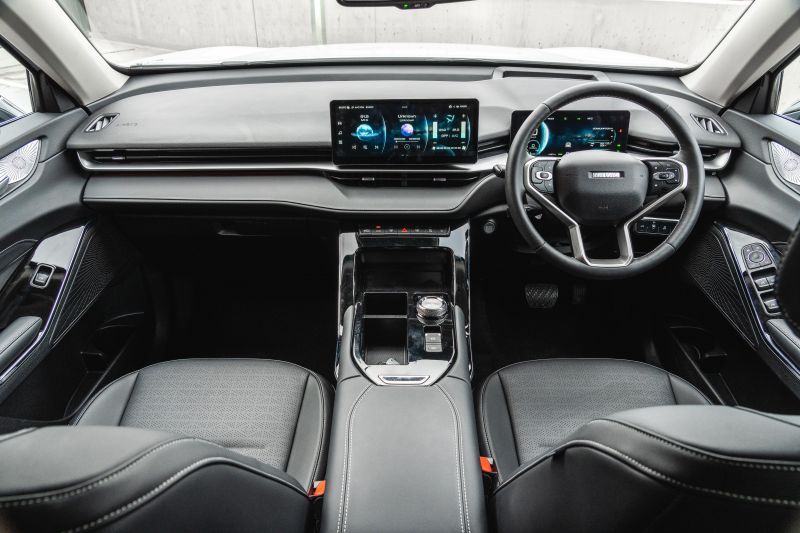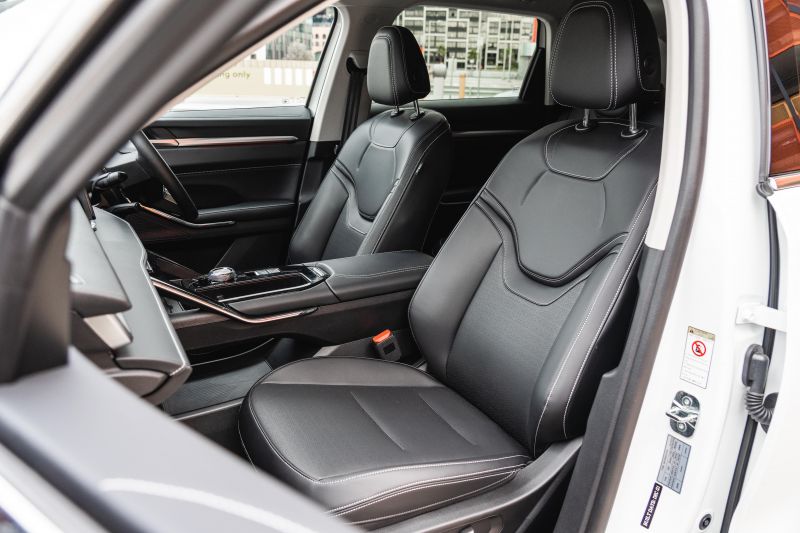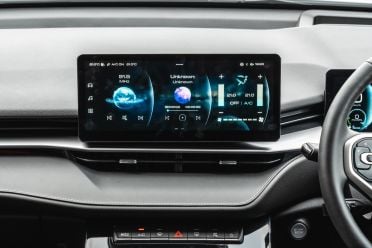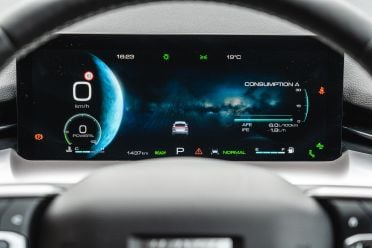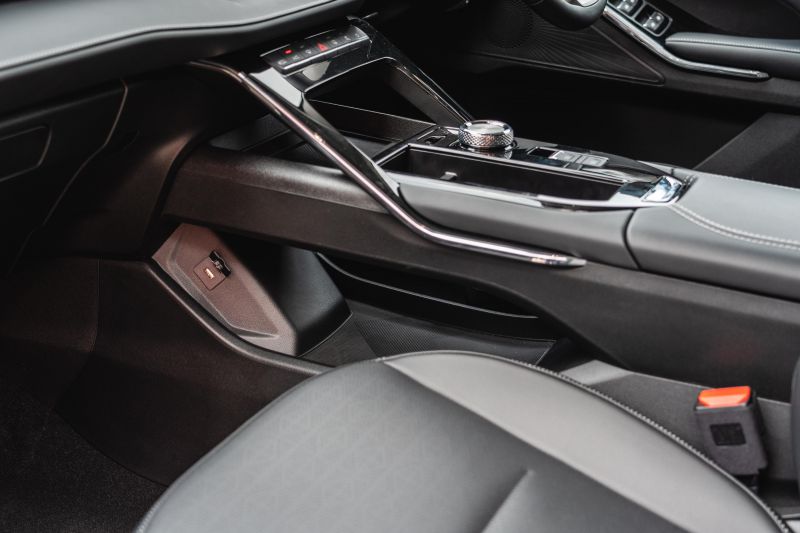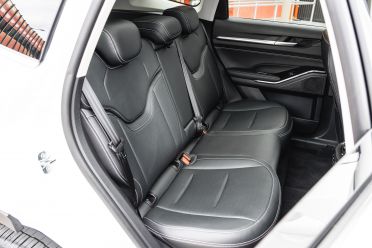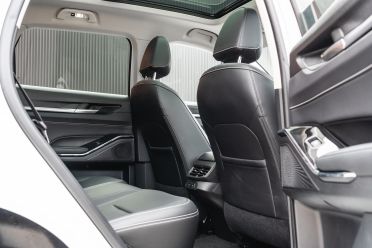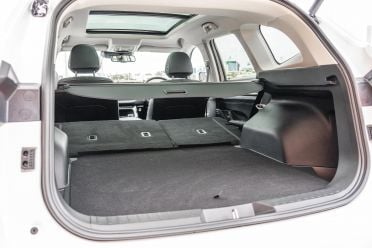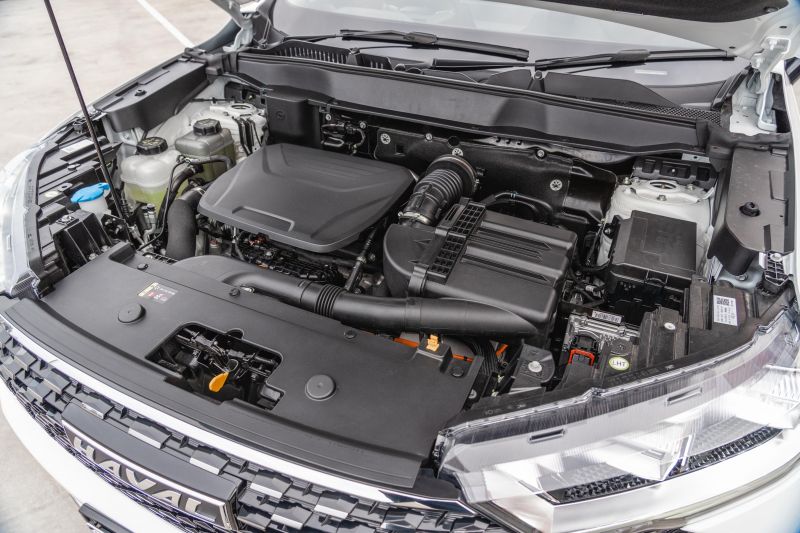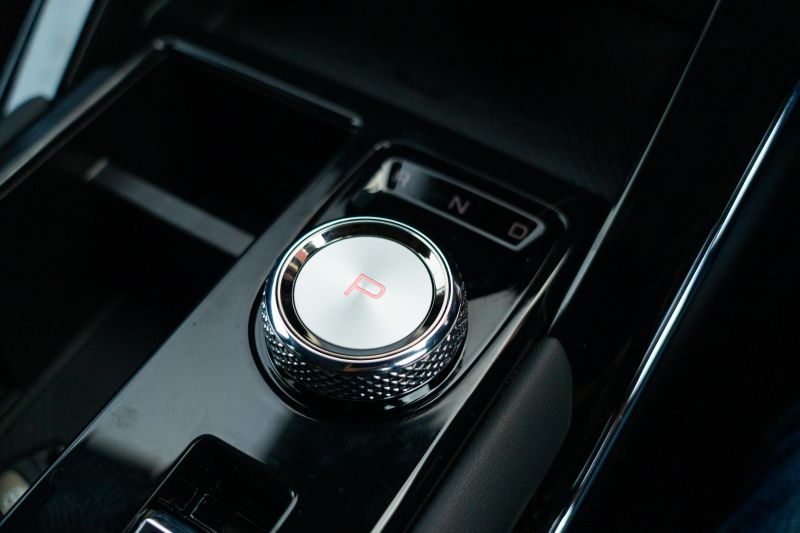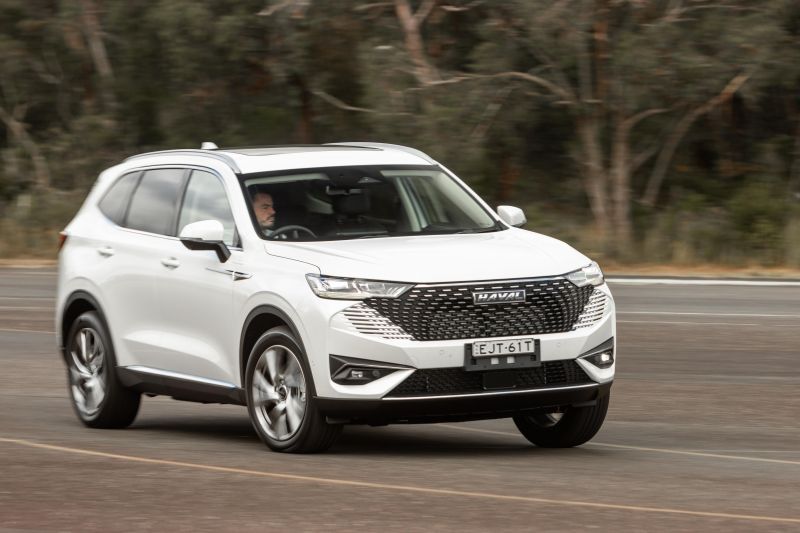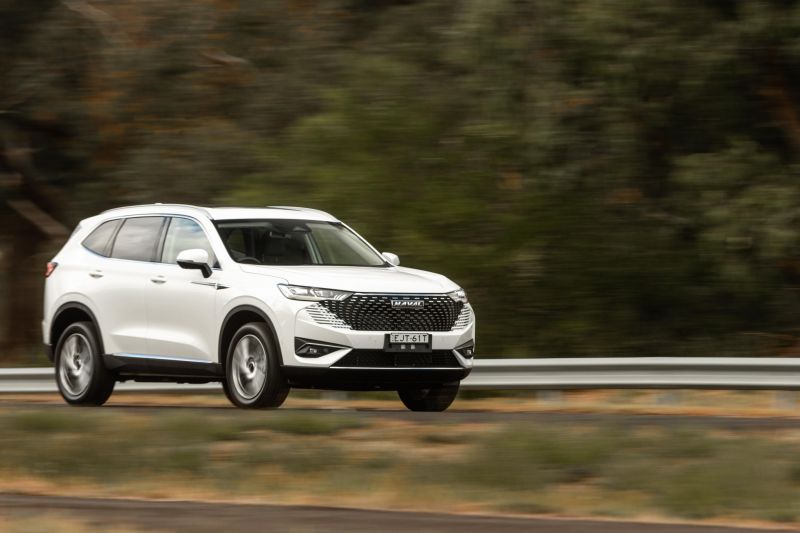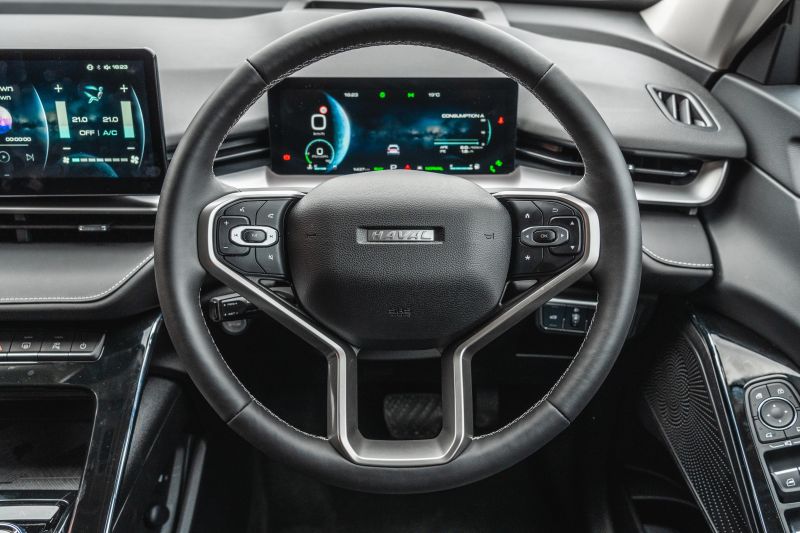Haval is doing what most of its rivals can’t. It’s tackling the Toyota RAV4 head on, with the new H6 Hybrid.
It’s available in one fully-loaded trim level, and features a drive-away price that undercuts the most expensive front-drive RAV4 by around $4000, and the most expensive all-wheel drive by $10,000 when on-roads are accounted for.
There’s more to the H6 Hybrid than its sharp sticker price. With 179kW of power and 530Nm of torque, it channels a whopping 210Nm more than the turbocharged petrol H6 through the front wheels.
Impressive performance figures, backed by an impressive 5.2 litres per 100km fuel economy claim on the combined cycle.
Of course, there’s more to this story than the numbers.
Is the 2022 Haval H6 Hybrid made of the right stuff to take on the Toyota RAV4 Hybrid?

How much does the Haval H6 Hybrid cost?
The Haval H6 Hybrid has a starting price of $45,990 drive-away, sitting it atop the H6 range.
It’s $2000 more expensive than the petrol H6 Vanta with its black trim pieces, and $3000 more than the H6 Ultra with which the Hybrid shares its equipment list.
Rivals are thin on the ground. The equivalent Toyota RAV4 based on price is the XSE 2WD Hybrid ($43,250 before on-roads), the equivalent based on standard equipment is the Cruiser 2WD Hybrid ($45,750 before on-roads).
You can also get all-wheel drive with your RAV4 Hybrid, which bumps the price of the XSE to $46,250 before on-roads, and the Cruiser to $48,750 before on-roads.
2022 Haval H6 pricing:
- Haval H6 Premium: $33,990
- Haval H6 Lux: $36,990
- Haval H6 Ultra: $39,990
- Haval H6 Ultra AWD: $42,990
- Haval H6 Vanta: $40,990
- Haval H6 Vanta AWD: $43,990
- Haval H6 Hybrid: $45,990
All prices are drive-away.
What do you get?
The H6 Hybrid comes standard with the following equipment:
- 12.3-inch touchscreen infotainment display
- 10.25-inch digital instrument cluster
- Wired Apple CarPlay and Android Auto
- LED headlights, daytime running lights and tail lights
- LED front and rear fog lights
- Keyless entry and start
- Leather-wrapped steering wheel
- Black leatherette upholstery
- Dual-zone climate control
- Eight-speaker sound system
- Electronic anti-glare rear-view mirror
- Rear privacy glass
- Power windows with on-touch up/down for all windows.
- Head-up display
- Semi-autonomous parking assist
- Interior ambient lighting
- Power tailgate
- Panoramic sunroof
- Wireless phone charging
- Eight-way power driver’s seat
- Four-way power passenger’s seat
- Heated and ventilated front seats
- Heated steering wheel
You’ll be able to distinguish the Hybrid from its petrol siblings from its grille, which features unique cutouts beneath the headlights, new door trims, and the unique high-set central brake light.
It’s available in Crayon Grey, Blue Sapphire, Burgundy Red, Hamilton White, Ayers Grey, Golden Black, and Energy Green.
Is the Haval H6 Hybrid safe?
The Haval H6 petrol has a five-star ANCAP rating, but the Hybrid remains unrated.
The petrol scored 90 per cent for adult occupant protection, 88 per cent for child occupant protection, 73 per cent for vulnerable road user protection, and 81 per cent for safety assist.
The Hybrid comes standard with the following safety features:
- AEB with pedestrian/cyclist/junction assist
- Lane-keep assist
- Lane centring assist
- Lane departure warning
- Adaptive cruise control
- Blind-spot monitoring
- Rear cross-traffic alert
- Driver attention monitoring
- Traffic sign recognition
- Traffic jam assist
- Safe exit warning
- Front, front-side and curtain airbags plus a front-centre airbag
- Surround-view camera
- Front and rear parking sensors
- Tyre pressure monitoring system
What is the Haval H6 Hybrid like on the inside?
Even at $46,000 drive-away the Haval H6 has a lot of equipment, and a design that really helps it stand out.
The minimalist dashboard and dual-screen setup are thoroughly modern, and could have been lifted from something with a Japanese or Korean badge based on how it all looks on the showroom floor.
The driving position is disappointing, though. I know six-foot-seven isn’t what you’d call normal, but the angle of the seat base and backrest in the Haval are angled in such a way that leaves my arse numb after around an hour behind the wheel, regardless of how they’re adjusted.
Much of what you touch feels high-quality. The steering wheel is trimmed in leather, the seats are trimmed in what feels like leather, and the dashboard and doors are soft and padded. Some of the fancier-looking bits aren’t quite as fancy as they seem, though.
The Mercedes-like speaker grilles aren’t actually metal, and the sloping sides of the under-dashboard storage space are a bit cheap when your knee bashes into them. It’s a nice place to spend time, though.
Haval’s technology looks flashy on the surface, and it’s clearly packing some processing power. The way it responds to swipes is slick, and the menus all load quickly.
It’s still hiding a few quirks, though. The seat heat and ventilation controls are buried in a sub-menu, for example, and flicking into Sport Mode on the home page makes the car flash its hazard lights for some reason. Apple CarPlay looks great on the widescreen display, and is what we used most of the time.
The driver is faced with a simple screen, which offers a range of basic trip computer displays to accompany the digital speedo and active driver assists display. It’s not the last word in sophistication, but it makes the dials in an equivalent-priced RAV4 or the digital dashboard in the Mazda CX-5 look a bit old-hat.
Storage is a strong suit. There’s a wireless phone charger beneath the dashboard, and a space alongside the transmission selector that can be turned into cupholders (using pop-up teeth) or a spot for your keys, wallet, and phone.
Beneath that is a space big enough for a handbag, complete with two USB ports and a 12V outlet. You won’t struggle to find somewhere to dump your stuff in the H6.
Rear seat space is impressive. The H6 is classed as a mid-sized SUV, but it’s a big vehicle relative to its rivals and that shows.
There’s plenty of room in every dimension, to the point where six-footers will be able to comfortably sit behind six-footers, and the mostly flat floor means the middle-seat occupant won’t feel like a second-class citizen. Even with the massive panoramic sunroof fitted, headroom is excellent in every seat.
In terms of amenities, there are two USB-A outlets, a fold-down armrest with two cupholders, and rear air vents. The storage cutouts in the doors, however, aren’t great as they lack a proper cutout for bottles like in most rivals.
Child seats can be mounted using one of the three top-tether anchor points or the ISOFIX anchor points on each outboard seat.
With the rear seats upright the H6 has a claimed boot capacity of 600L, one of the largest in the class. This expands to 1485L with the rear seats folded down.
What’s under the bonnet?
The H6 Hybrid is powered by a 1.5-litre turbocharged petrol engine teamed with a two-speed 130kW electric motor and 1.8kWh battery pack.
The petrol engine punches out 110kW and 230Nm, while the electric motor makes 300Nm and an undisclosed amount of power. Based on the combined claims, we’d suggest it makes 69kW.
Total system outputs are 179kW of power and 530Nm of torque, sent to the front wheels via a two-speed Direct Hybrid Transmission.
It’s capable of using the petrol engine to power the battery and having the electric motor drive the wheels, using the engine to drive the wheels directly, using the electric motor to drive the wheels directly, and having both power sources combine.
Claimed fuel economy is 5.2 litres per 100km, and the H6 Hybrid drinks 91 RON regular unleaded.
We saw 5.7 litres per 100km on a loop blending inner-city and highway driving.
Braked towing capacity in the H6 Hybrid is 1500kg, down 500kg on what’s on offer elsewhere in the range.
How does the Haval H6 Hybrid drive?
We’re very familiar with Toyota hybrids by now, so we have a clear frame of reference for how the H6 Hybrid should behave.
In some ways it’s better than a RAV4, in others it lacks a touch of the polish Toyota has applied to the petrol-electric powertrain it’s been developing since the first-generation Prius.
The good? The motor in the H6 Hybrid packs enough of a punch to offer decent electric performance at low speeds, for starters.
It moves off the mark and accelerate to almost 50km/h on electric power unless you really push hard on the right-hand pedal, so the car is relying on its most efficient power source more often than in hybrids with less powerful motors.
It’s less active at highway speeds. Although it kicked in sporadically at 100km/h, the engine in the H6 Hybrid is doing the heavy lifting and the fuel economy figure begins to tick upwards. No hybrid is at its best out of town, but the EV mode in the H6 feels less active than the equivalent in a RAV4.
When the petrol engine fires, it generally does so smoothly and quietly. You get a bit of vibration when it kicks in, but once it’s active the petrol engine generally interacts smartly with the electric motor. It can be caught out occasionally, though, due to what feels like the transmission calibration.
Put your foot down hard off the mark and occasionally what feels like all 530Nm finds its way to the front tyres all at once, which can make for some smokey getaways from the lights, and it takes a second for the car to work out exactly how it wants to deliver its performance if you want to overtake in a hurry at highway speeds.
The petrol engine occasionally settles into what feels like a frenetic idle at a standstill, presumably to charge the hybrid battery, which undermines the EV-like refinement you get in most hybrids.
None of these problems are fatal. Most of the time, the H6 goes about its business with minimum fuss, shuffling smartly between petrol and electric power to deliver a blend of performance and economy, and a surprising turn of speed when you need it.
The weak point in the Hybrid’s drivetrain is the brake pedal. It’s very firm, and has a dead feeling as soon as you dive into its travel – and when the regenerative braking is working, it actually feels like it’s moving without driver inputs.
It’s not unusual for the changeover between regenerative (which is quite strong, and smartly calibrated in the H6) and physical braking to be a bit clunky in hybrids, but the dead pedal in the H6 is average essentially all the time.
Hybrid powertrain aside, the range-topping H6 drives with the same well-rounded but unremarkable resolve as its siblings.
The steering is light enough at low speeds to make what’s quite a big car feel wieldy in tight parking garages, and the cameras are excellent. Like the system in the GWM Ute, the surround-view camera is comparable to what you get in a BMW or Audi, and it offers the ability to select from a range of angles so there’s no excuse for scraped bumpers or wheels.
Ride quality is good, for the most part, with most bumps and ruts absorbed without a fuss.
The H6 Hybrid is just 21kg heavier than an all-wheel drive H6 petrol, so it doesn’t feel cumbersome or awkward, although it does get floaty over highway crests and dips.
That float was more pronounced in the Hybrid than in the regular H6 on the rough road route we use to film, and even the petrol model was one of the floatiest cars we’ve experienced.
How much does the Haval H6 Hybrid cost to run?
The Haval H6 is covered by a seven-year, unlimited-kilometre warranty with five years of roadside assist.
The first five years of servicing will set you back a combined $1650.
The first service is required after 12 months or 10,000km, but from there the intervals are 12 months or 15,000km apart.
CarExpert’s Take on the Haval H6 Hybrid
Even putting the price aside, the Haval H6 is a good hybrid SUV.
It’s efficient in the real world, and offers a meaningful performance bump over the petrol-only car when the electric and petrol engines are working together. Haval hasn’t managed to match the supreme level of polish that sets Toyota’s hybrids apart, but the H6 is a strong starting point.
Throw in the fact it’s $46,000 drive-away and includes every option the Haval factory can make as standard, and you’re looking at a credible rival to the Toyota RAV4 Hybrid.
Haval could further improve the equation if it can lock down supply. The H6 Hybrid is appealing on its merits; if it’s also in stock when you have to wait up to nine months (or longer) for a high-specification RAV4 Hybrid, it’s even more attractive.
Click the images for the full gallery
MORE: Everything Haval H6





